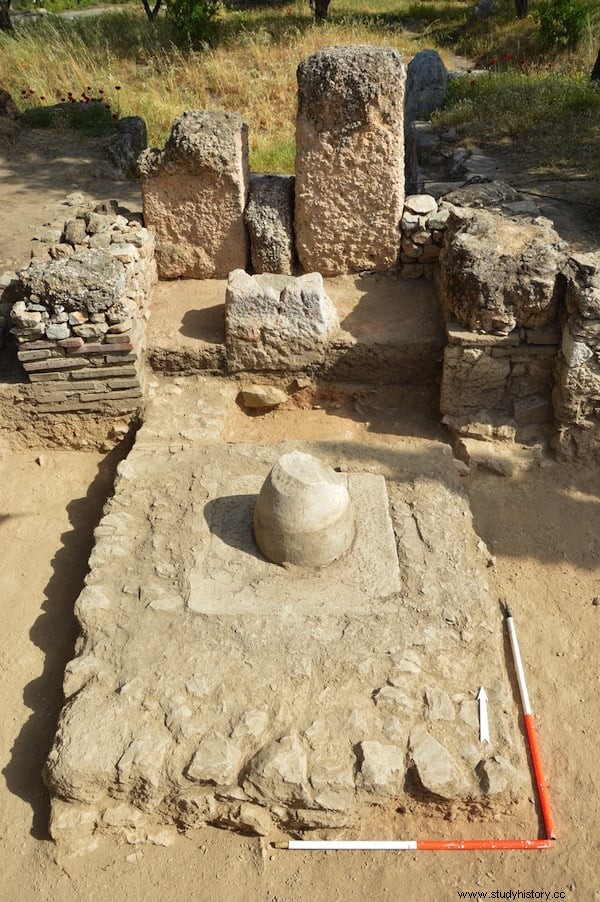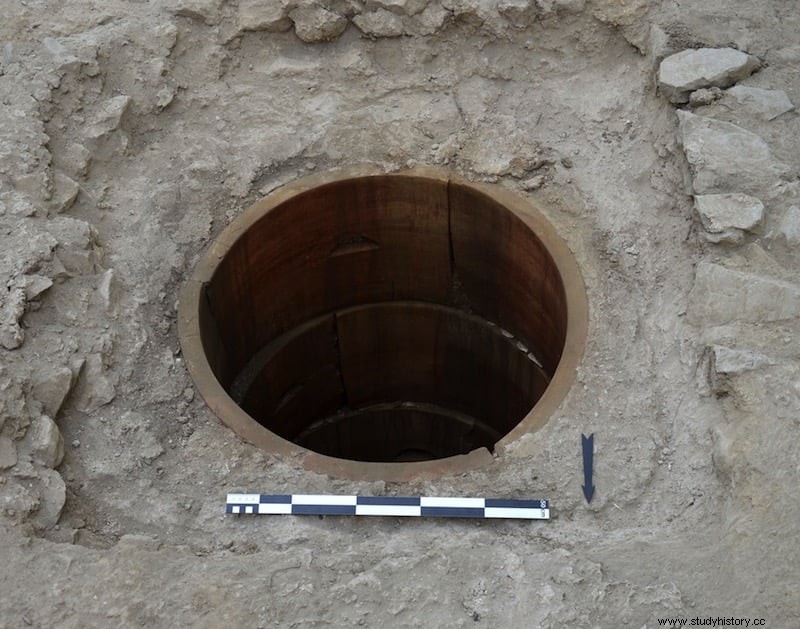Archaeologists discovered in Athens in 2016 an oracular well dedicated to the god Apollo . Although others have been found before in Greece, such as the famous oracle of Delphi, this is the first to appear in the same city of Athens .
The well is in the Ceramic neighborhood (Kerameikos ) northwest of the Acropolis, which was the old gateway to the city, and where the famous necropolis is located, whose stelae and funerary monuments mark the road to Eleusis. This necropolis is also one of the most impressive visits that the traveler can make in the Greek capital.
To the south of the necropolis there is a sanctuary, discovered by Kyriakos Mylonas in 1890, where an omphallus, a marble stone symbolizing the navel of the world, was found. and that was also found at Delphi. It is believed that it was used for direct communication with the gods.

This sanctuary was dedicated to Artemisa Soteria (the savior ), as can be deduced from various inscriptions and artifacts that have turned up in the course of excavations over the years.
In 2012, researchers at the German Archaeological Institute realized that the omphallus it was placed on a marble slab that covered an opening in the floor.
Last year the omphallus was finally lifted with a crane to reveal what had been hidden for hundreds of years:a circular well 9 meters deep , built with semi-cylindrical clay tiles. They have found more than 20 inscriptions of the phrase ΕΛΘΕ ΜΟΙ Ω ΠΑΙΑΝ ΦΕΡΩΝ ΤΟ ΜΑΝΤEΙΟΝ ΑΛΗΘΕΣ (Come to me, O Peán, and bring with you the true oracle ).
Peán was one of the epithets of Apollo, the brother of Artemis. The phrase is a prayer and invocation to the deity that was used to request faithful and precise answers to the questions asked by believers.

The shaft has a diameter of 65 centimeters, which makes it difficult for archaeologists to explore. However, from what has been investigated it seems that the inscriptions date back to Roman times , probably from the 3rd century, although the well is undoubtedly much older, built about 1,800 years ago .
According to statements by Jutta Stroszeck, director of the ceramic excavations, to the Haaretz newspaper, the well would have been used to practice hydromancy , a method of divination by means of water very common in Antiquity.
The finding is also important because it confirms that the omphallus is located in its original location , being therefore the only one in all of Greece that would not have been moved later, as if it happens for example with the one in Delphi.
